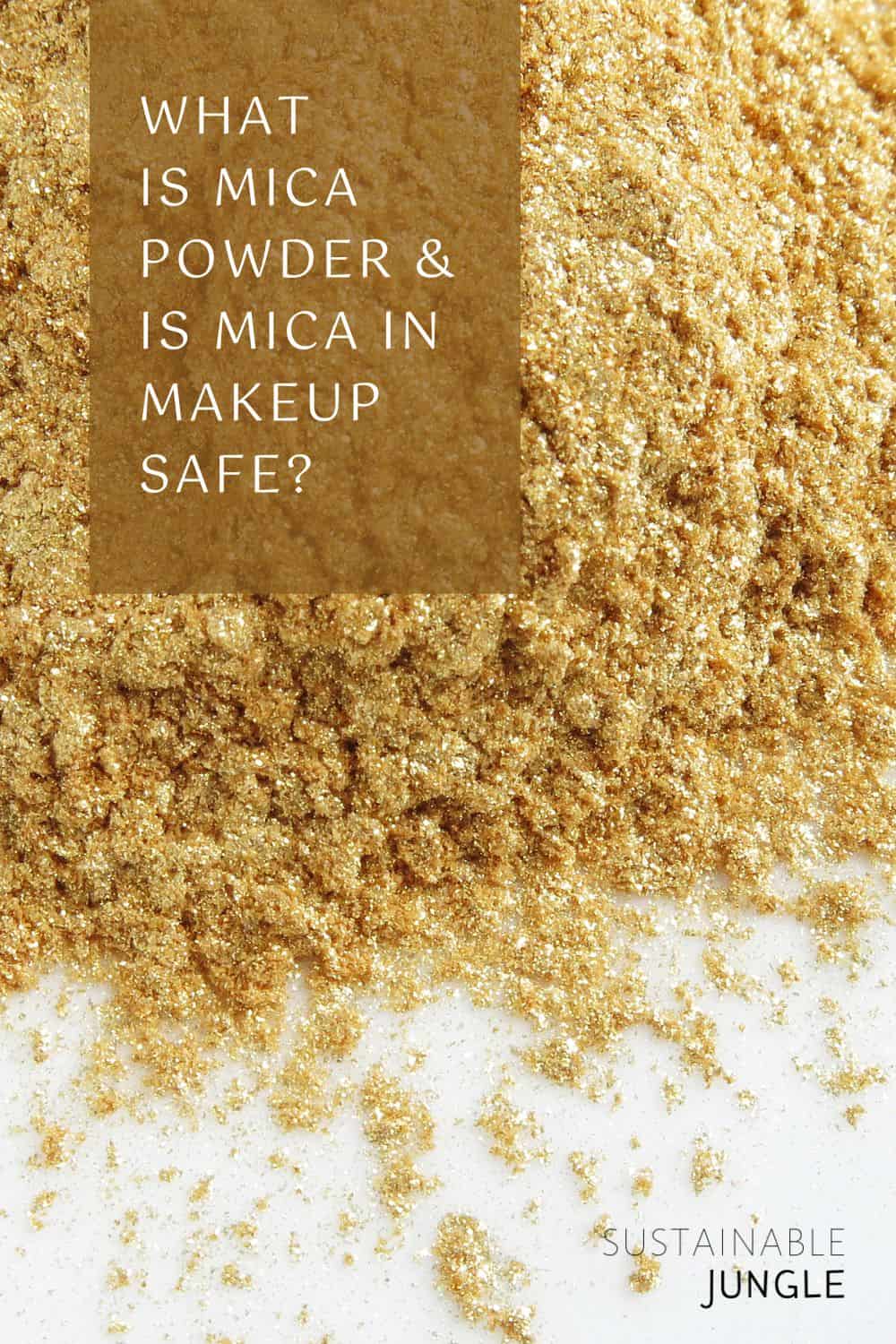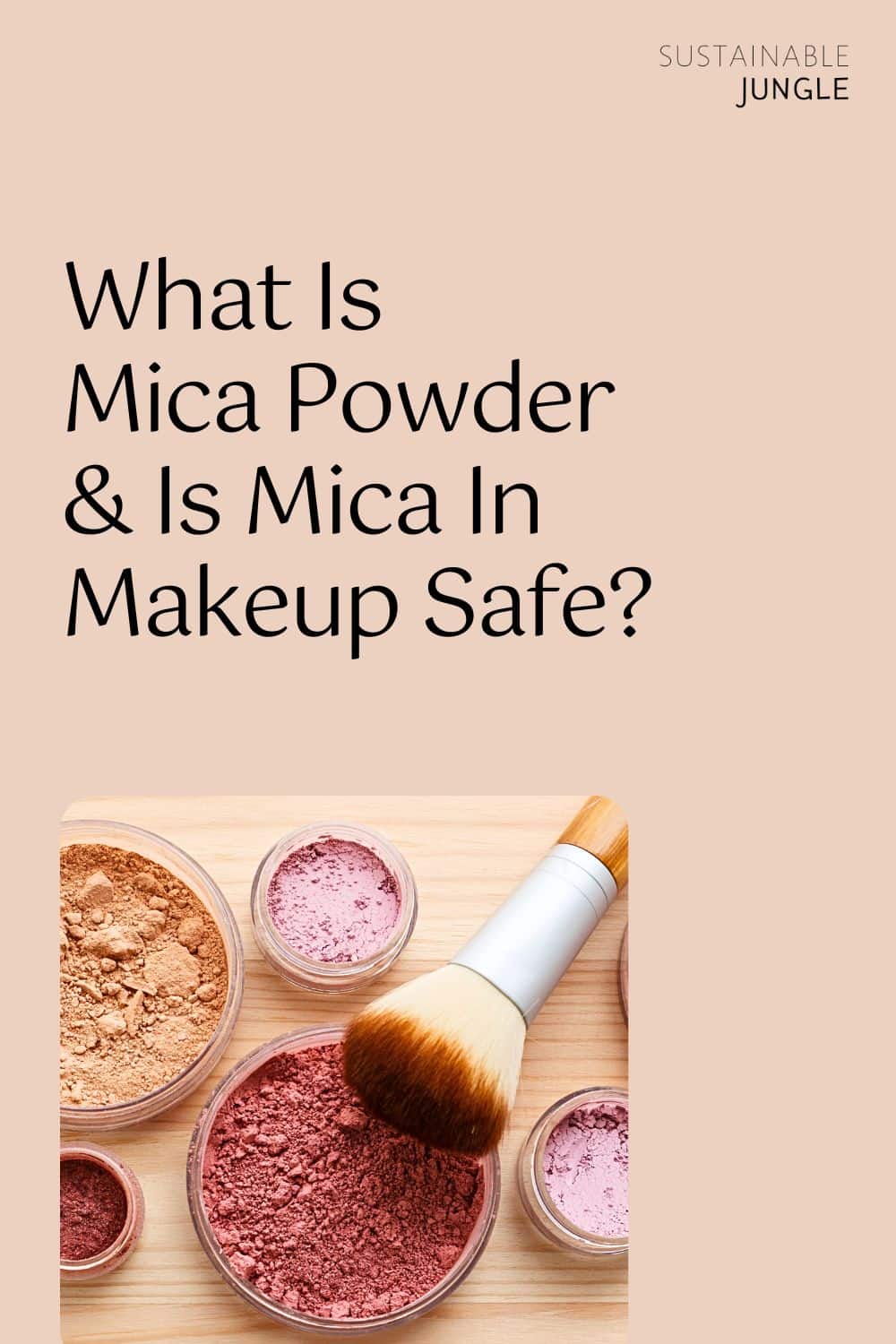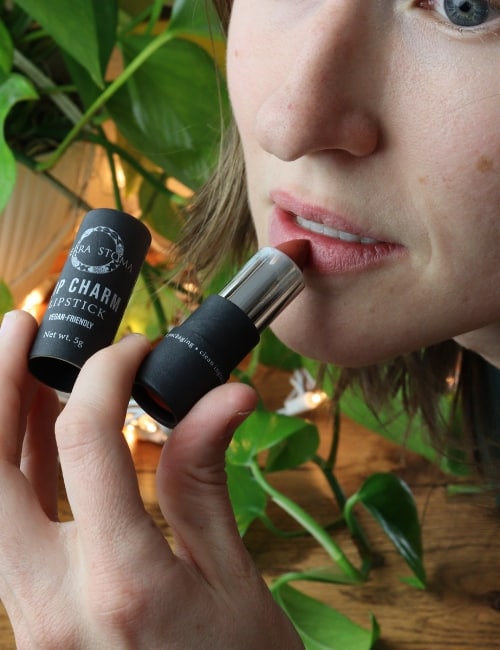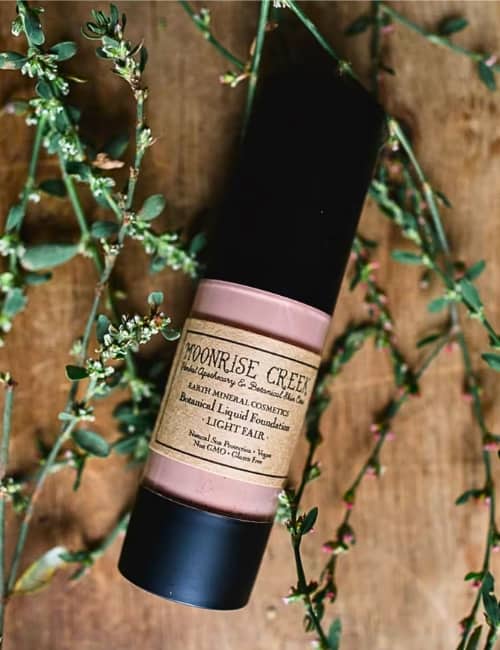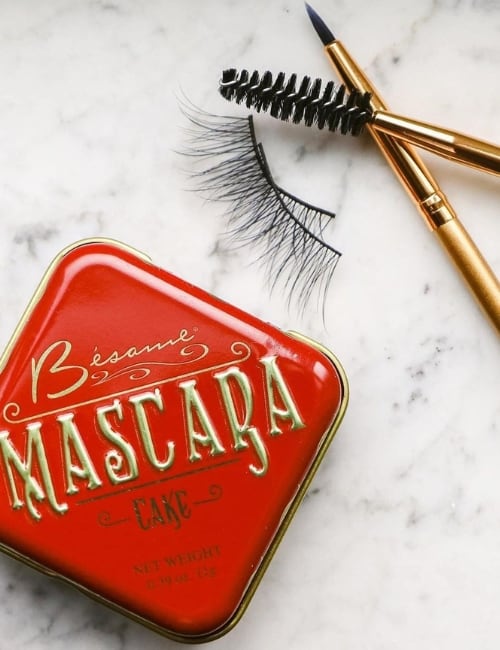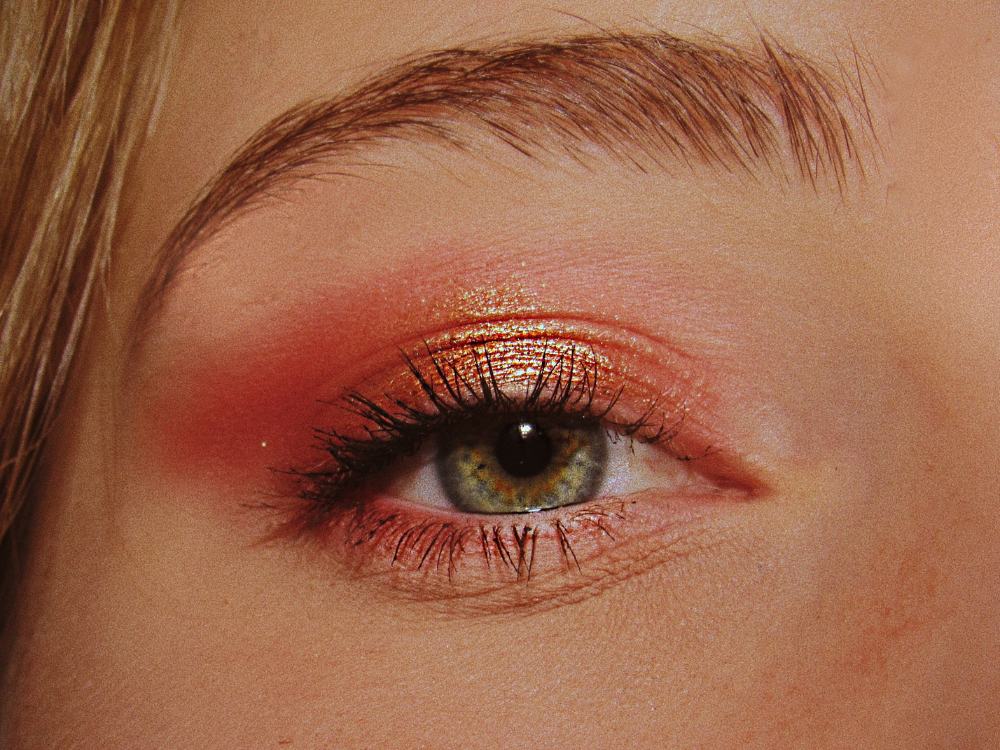
What Is Mica Powder & Is Mica In Makeup Safe?
Ever wonder what type of mineral is used to give makeup a glittery quality?
That would be mica powder.
Even if you’re not 100% sure what mica powder is, you’re probably wearing it right now.
The world would admittedly be a duller place without mica, which is why it’s found in nearly all makeup—even the likes of organic eyeshadow and natural foundation.
But it’s a double-edged sword.
One person’s sparkly mica is another person’s (or child’s) forced labor.
Between toxicity and ethical concerns associated with mica powder, it’s no wonder we’re seeing more sustainable makeup brands switch to mica alternatives?
Let’s stop letting the shiny distract and answer some important questions about mica: what is it, what is mica used for in makeup, and (most importantly) is mica dangerous to use?
1. What Is Mica Powder Used For?
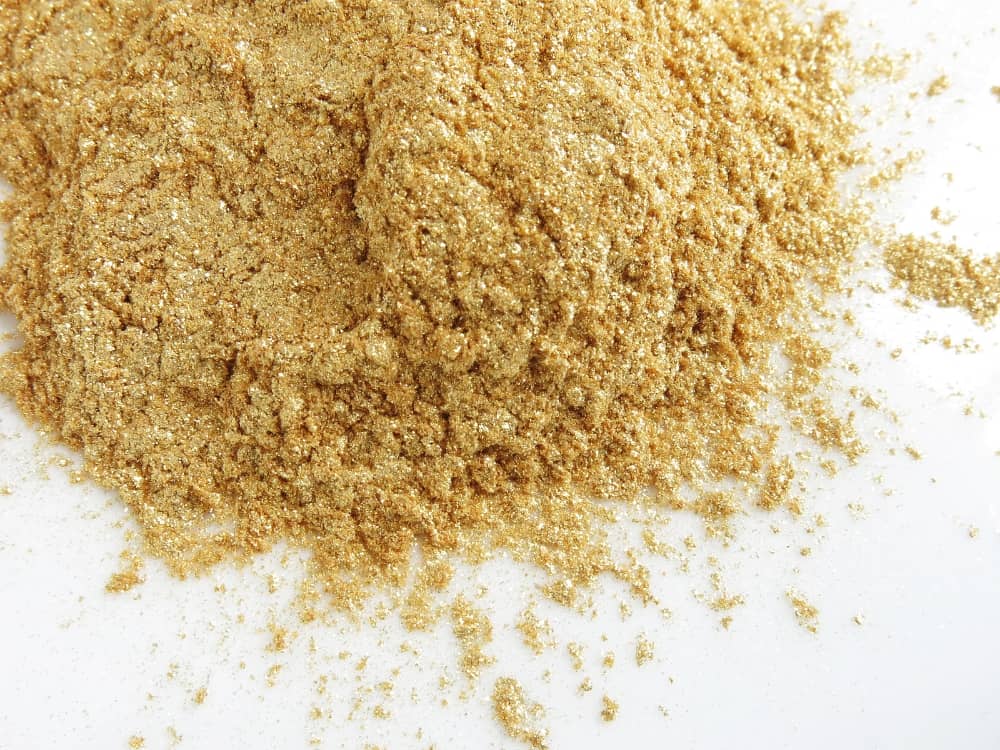
Before we get to the glam, what is mica powder made of?
Well, it’s not really made of anything. It just is.
According to the Minerals Education Coalition, “Mica is a mineral name given to a group of minerals that are physically and chemically similar.”
There are 37 different types of mica minerals, or sheet silicate minerals (silicate = minerals containing SIO4, AKA most of the rocks in Earth’s crust).
These silicate minerals are light, soft, and form flakes or sheets with distinct layers. That makes sense considering “mica” is Latin for “crumb.”
What Is The Purpose Of Mica Powder?
Natural mica powder has been used for millennia.
Its first use dates back about 4,000 years ago in India, where it was commonly incorporated into a variety of medicines. Around the same time, Mayan civilizations were also using mica minerals to decorate walls and stucco, making them glimmer in the sun.
Mica was later “discovered” in the U.S. in 1803 and quickly began showing up in many household products.
Here, mica’s principal use is in gypsum wallboard where it serves as an extender and filler. It’s also commonly used in the paint and plastic industry as a pigment extender and the electronics industry as an insulator.
But it’s best known for its shimmer, meaning you’ll mostly see mica powder uses in cosmetics.
We’re not sure exactly when mica started making its way into makeup, but it likely happened around the 1970s, when there was an increase in “mineral makeup”—products that used natural, finely ground minerals instead of preservatives, chemicals, and dyes.
2. What Is Mica In Makeup?
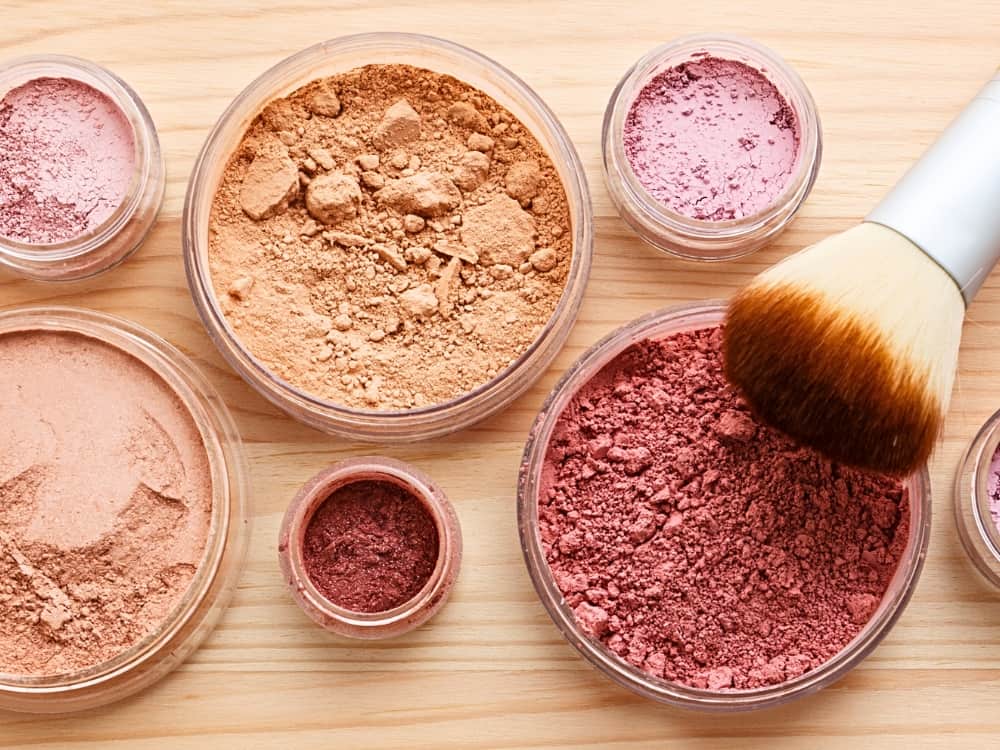
The mica found in makeup is made up of the same 37 mica minerals used in other applications.
But when it comes to uses of mica in cosmetics, a single property stands out: its glimmer.
Mica is the best natural skin care ingredient to provide a bit of sparkle and glow. This comes from its light-reflecting properties that help that blush really pop.
What Does Mica Do To Makeup?
You know that glimmery, shimmery, bright, and beautiful look you get after a fresh application of blush or bronzer?
That’s all thanks to natural mica powder.
Additionally, some of mica’s functional properties that make it ideal for the construction or electronics applications discussed above only add to why it’s found in makeup.
In foundation (whether powder or cream), it helps individual ingredients blend well together, meaning a clump-free and smooth texture.
It can also enhance skin adhesion, keeping makeup on your face and looking fresh all day long.
In other cases, mica powder is combined with different ingredients to achieve different effects. When combined with titanium dioxide, for instance, it creates a pearlescent powder that reflects every color of the rainbow.
Alternatively, when iron dioxide is added, mica assumes an earthy golden tone.
The combination with sodium sulfate and barium chloride provides an extra glowy and glossy look.
Mica is also a pigment powder and comes in many different colors, including dark green, yellow-green, blue, purple, pink, grey, black, and translucent.
In some cases—like mica in eyeshadow—these may provide a tint or hue to mineral makeup.
So is mica powder the same as glitter?
It’s not. While glitter (often even biodegradable glitter) is synthetically made, mica is simple a mineral naturally found on Earth.
Common Kinds of Mica Makeup
Mica has a natural luster that makes it an ideal ingredient for makeup products that shimmer: like lip gloss, highlighter, eyeshadow, blush, bronzer, natural nail polish, and lipstick.
Its cohesive properties and resistance to running make it useful in concealer, foundation, and BB cream.
Looking for the mica ingredient in cosmetics in your vanity?
Check the ingredient list. In addition to mica (CI 77019)—the cosmetic ingredient name for “mica-group minerals”—it’s sometimes referred to as “potassium aluminum silicate”.
3. Is Mica In Makeup Safe?
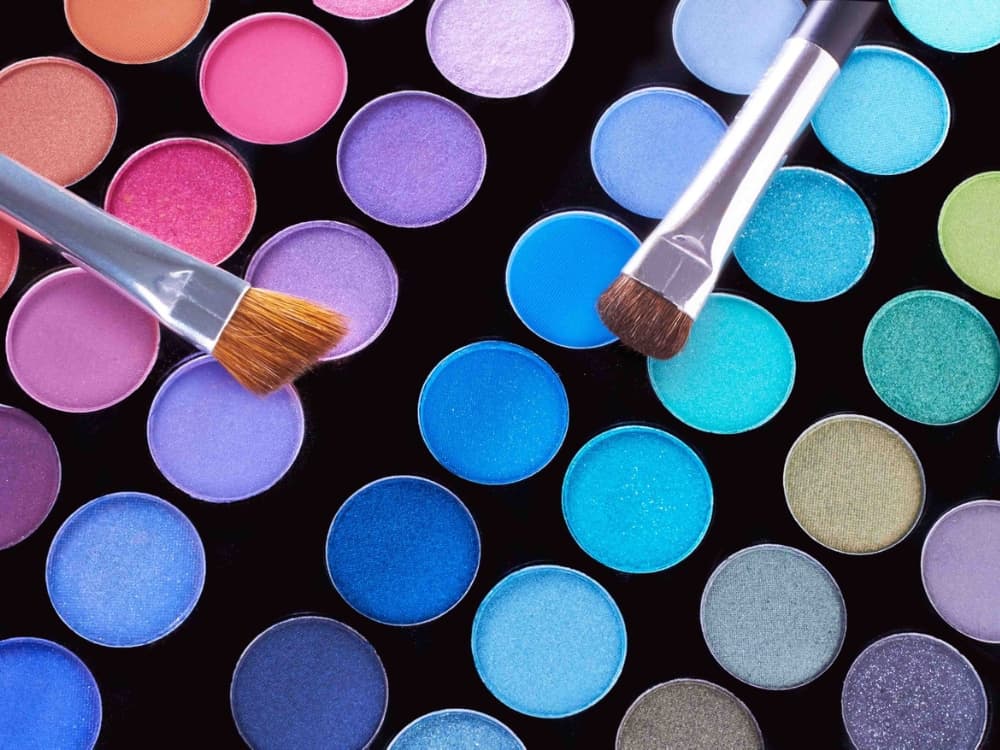
Now that we know a little about mineral mica, is it safe?
When it comes to the safety of mica in skin care and cosmetics, there are a lot of (dermal) layers to evaluate.
Dangers Of Mica In Makeup
Let’s start out with a commonly-asked question: is mica toxic in makeup?
Not really.
Neither Cosmetics Info nor the Environmental Working Group appears to express any concern over the safety of natural mica powder. It scores a two (fair) in the EWG’s Skin Deep safety guide.
Their concerns are few which include the following:
- Bioaccumulative and persistent in wildlife and humans
- Limited evidence of gastrointestinal or liver toxicity
However, they include that since it’s a mineral from the earth, it may contain trace amounts of heavy metals (lead, arsenic, and mercury). Mica powder has also sometimes been shown to be contaminated by silica or deadly asbestos fibers.
These present their own health problems, meaning long or heavy exposure can lead to health risks and side effects to mica in cosmetics contaminated with these other substances.
So does mica cause cancer?
Not itself, but if you’re regularly using contaminated mica cosmetics, it’s not out of the question.
While not a perfect system, the US Food and Drug Administration (FDA) regulates mica use to ensure these other potential contaminants are kept at low levels.
Beyond that, however, the FDA has declared mica powder to be a color additive exempt from certification. Because it is from a natural source (vegetables, animals, or minerals), mica doesn’t need to be certified like synthetic color additives.
The Cosmetic Ingredient Review Expert Panel has yet to officially review mica. However, that might change. In 2019, it was suggested by the FDA as one of the “priorities for cosmetic ingredients review”.
So, is mica safe in makeup?
Overall, yes, but as with anything, it’s probably best to use it in moderation. Save the shimmer for date night.
Is Mica Powder Edible?
We’re not suggested you start eating it, but given we all ingest tiny bits of cosmetics that go on our lips— AKA that organic lipstick with mica (CI 77019) on the ingredient list—it’s important to know: is mica powder safe for lips?
Mica powder is generally considered safe for use on the lips when it is specifically designated as lip-safe or cosmetic-grade.
Cosmetic-grade mica powders are produced and tested to ensure their safety and compliance with regulations for cosmetics and personal care products. These powders are formulated to be non-toxic and non-irritating when applied to the skin, including the sensitive skin of the lips.
No matter where you’re applying your mica makeup, be cautious when purchasing mica powders from unverified sources, as non-cosmetic-grade mica powders may not meet safety standards and could contain impurities that could be harmful.
Is Mica Safe For Sensitive Skin?
Always perform a patch test when using a new cosmetic product, including mica-based lip products, to check for any allergic reactions or sensitivities.
If you experience any irritation or discomfort, discontinue use immediately.
4. Is Mica Ethical?
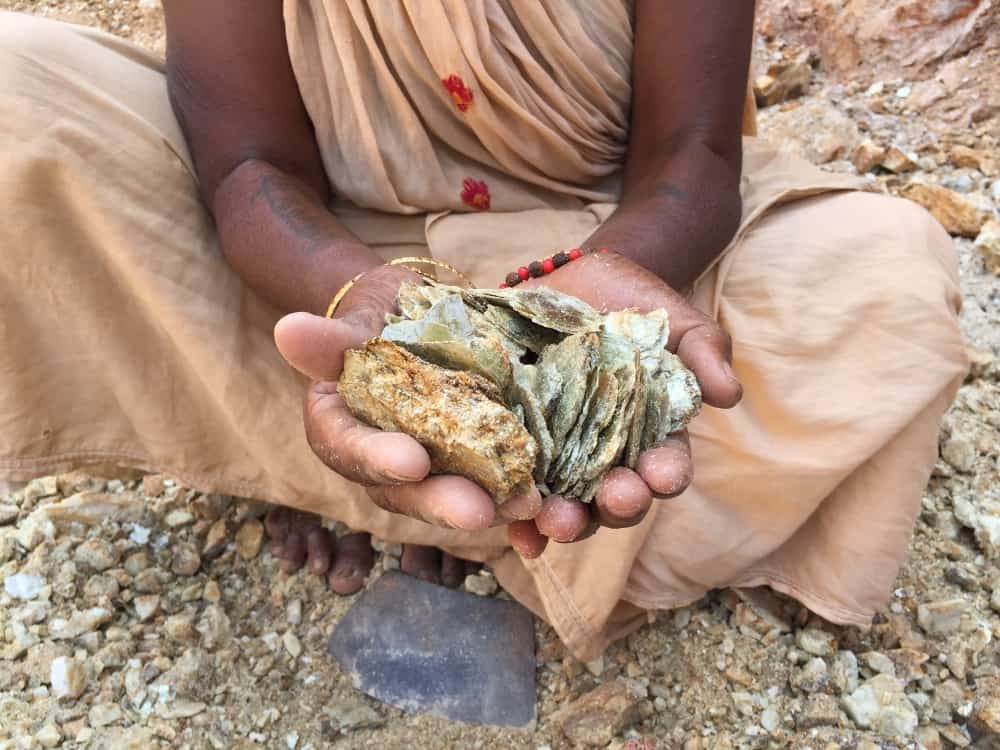
While the answer to our question, “Is mica bad for your skin?” may usually be no, that’s not to say it isn’t bad for the miners responsible for sourcing it.
In the United States, flake mica is abundant in states like Arizona, North Dakota, South Dakota, New Mexico, Georgia, North Carolina, and South Carolina.
Despite its domestic abundance, most of the mica found in cosmetics is imported from overseas, where safety regulations and safety equipment is often lacking—which brings us to several concerns over mica mineral in makeup.
Safety Concerns Of Mica Mining & Manufacturing:
It’s been found that miners and workers in cosmetic manufacturing may be exposed to airborne mica particles, which poses a risk when exposed through inhalation. When breathed in, mica powder can irritate the lungs and potentially cause lung scarring (known as fibrosis).
This leads to coughing, infections, and shortness of breath.
When contaminated with silicate mineral, mica powder has been shown to cause cancer in animals (human risk is still unclear).
Child Labor:
Mica is mined in more than 35 countries, but most of our mica in makeup comes from India, Madagascar, China, South Africa, and Brazil. While India has received most of the attention, China, Brazil, Madagascar, Pakistan, and Sudan have also been associated with another of mica’s non-shimmering sides: child labor.
India is home to a lot of high-quality mica, making them the first resort for many cosmetics companies.
There are more children in India than anywhere else in the world (more than 430 million) and the vast majority live in “difficult circumstances”.
These factors combine to give rise to mica being mined by children.
In just the so-called Indian “mica belt” (Jharkhand and Bihar) alone, more than 22,000 children are estimated to work in the mica mining industry.
While these children and their families rely on mining incomes, the dangerous working conditions have amassed global attention.
Always, mica involves an extremely labor-intensive process that requires hammers or ice picks to chip away at the mica for hours on end. Alternatively, explosives are used to crush rocks.
Because dangerous underground passageways are constructed to access better-quality mica, mine collapses and deaths are frequent.
Estimates indicate between 10 and 20 deaths in mines each month, but local officials have been known to cover up incidents—meaning that actual fatality numbers are likely significantly higher.
Even when workers escape these collapses alive, seeing children and other laborers with injured hands or arms is common.
Exploitation Of Labor & Wages:
There has been little incentive to provide living wages to the children, either. According to a recent Refinery29 expose, children as young as five years old reportedly made just 20 to 30 rupees for a long day at the mine.
That’s the equivalent of 29 to 43 cents per day!
Beyond just child labor, roughly 70% of Indian mica is the result of illegal artisanal and small-scale mining (ASM), the vast majority of which are associated with exploitative work conditions.
Many mica miners and workers are underpaid and exploited, often receiving meager wages for their labor. They work long hours in arduous conditions for little compensation, perpetuating a cycle of poverty.
Unfortunately, given the economic situation of many mining families, they have no better alternative. Their continued employment in mica mines is the only way to survive—which makes it difficult for companies and consumers to know what to do.
Environmental Impact:
Mica mining can have detrimental environmental effects, including deforestation, soil erosion, and habitat destruction. Unregulated mining practices can harm local ecosystems and water sources, leading to long-term ecological damage.
Lack of Transparency:
The mica supply chain is often complex and lacks transparency. Companies may struggle to trace the origins of mica powder in their products, making it difficult to ensure ethical sourcing and responsible mining practices.
All that said, would we be better off buying mica free makeup?
Boycotting all Indian mica may not be the best solution, so fortunately there are brands who are trying to improve the industry to the extent that they can by offering ethically sourced mica, rather than eliminate mica powder and ignore it.
Like opting for palm oil free products, mica free cosmetics aren’t always the best choice because then the harsh realities of the current mica industry will never change.
5. Beauty Brands Who Use Ethical Mica Powder
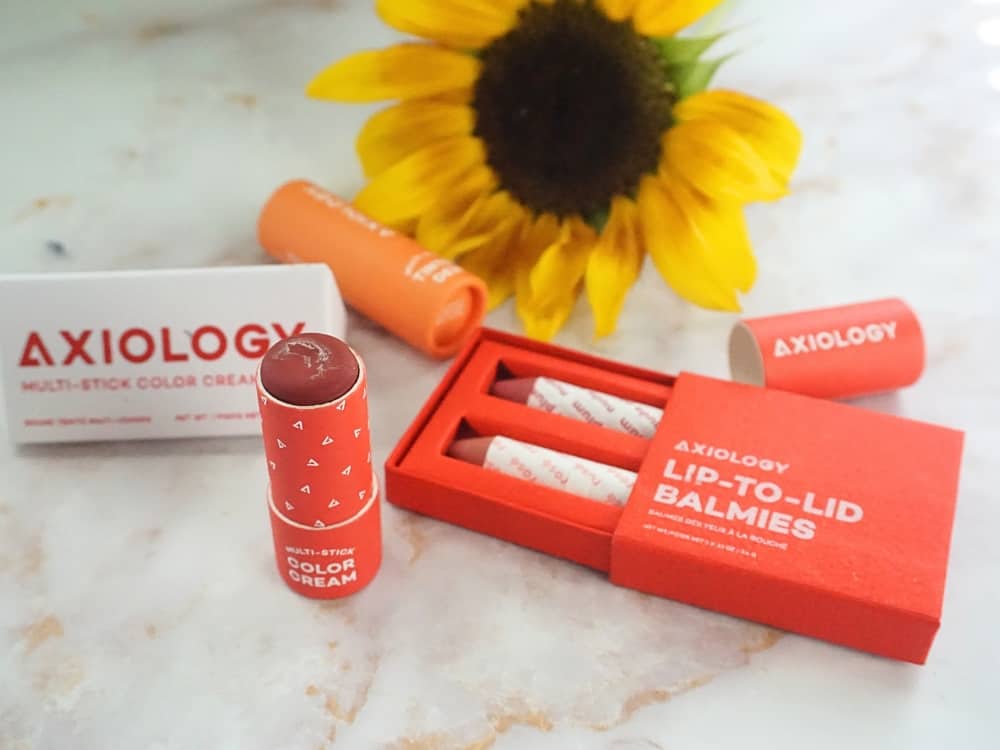
If big makeup brands (who aren’t always known for their ethical practices) have started to make a switch to ethically mined mica not mined using child labor, that should give you a clue how problematic traditional mica is.
Efforts like the Responsible Mica Initiative (RMI) have encouraged other brands to follow suit in making the switch to ethical mica.
RMI is working to establish a fair, responsible, and sustainable mica supply chain, particularly in Jharkhand and Bihar, which have received attention for having abysmal working conditions and child labor.
Ethical mica comes with more supply chain transparency and traceability, along with documentation, audits, and enforcement to ensure that child labor wasn’t involved.
However, unless the mica is sourced in the US or another country with high regulation, even this is difficult.
For that reason, cutting out mica altogether is certainly an option, but given many brands might then resort to synthetic or chemical replacements, we’re not convinced it’s the best one.
Switching to ethical mica seems to still be the best option for organic makeup brands since it doesn’t involve using chemicals and keeps people employed under better conditions.
Is Synthetic Mica Powder Safe For Skin?
Synthetic mica powder provides one of the best solutions when it comes to ethics, as it is the only way we can be 100% certain that there was no use of child labor.
But while natural mica powder for cosmetics is considered safe, can the same be said for its synthetic alternative?
Synthetic mica, or fluorphlogopite, is a human-made substance commonly found in glitter. Unlike glitter, however, it’s still made with natural materials and doesn’t release microplastics.
It has even smoother edges than its natural counterpart and tends to appear brighter, more consistent, and more luminescent, too.
However, just 10% of all mica is synthetic and that number isn’t expected to grow anytime soon.
What brands are using synthetic mica or ethically sourced mica?
- Axiology uses mica that is not from areas associated with child labor (i.e. India and South Africa). Their mica supplier supports the organization Made in a Free World.
- Dab Herb sources mica from and contributes addition funds to Made in a Free World.
- Elate Cosmetics sources their mica from a fair trade supplier that is a member of RMI.
- Fat and the Moon uses synthetic mica.
- 100% Pure uses responsibly sourced natural mica.
- RMS Beauty claims to use ethically-sourced natural mica powder.
Did you know we Have a Newsletter?
We cover the latest in sustainable living, fashion, zero waste, beauty, travel, finance and more…
Final Thoughts On The Safety Of Mica Ingredients In Skincare
You know what they say: all that glitters is not gold.
Mica may look pretty, but the way it’s produced can be anything but…
Mother Earth may have created this shimmery foundation, but if it’s mining and processing doesn’t improve, the beauty industry won’t be saving any save face.
Fortunately, we’re starting to see a lot of sustainable beauty brands replace traditional mica for ethically sourced mica (guaranteed free of child labor) or a synthetic, environmentally friendly mica.
Considering this small list of ethical mica brands though, we have our work cut out for us. We need to continue applying pressure on companies to make the switch to ethical or synthetic mica.
Next time you check out a YouTube makeup tutorial for a glittery party look, shop for cruelty-free concealer, or plan a night out with friends, do us a quick favor:
Share this article with the makeup wearers in your life to request that their favorite brands do the right thing.
Pin these:
